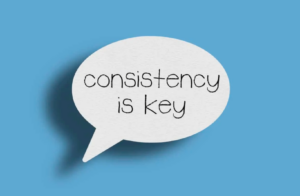If you have decided to run a small business, having a branding strategy is crucial when promoting your business. It is needed to be noticed and more importantly remembered for your benefits. Brand building is not only a visual component. How your customers will perceive you is the first thing that you should think carefully about . Build a reputation.
What do you look like?
Branding development is the most interesting part of brand strategy and brand building. Your icon, or logo, can be the most memorable part of your brand. You can use mood board templates, this can help you to find ideas for a perfect icon. Some logos are so iconic that their shape can tell everything about the business they represent. In the process of creating, do not forget about those components that already form the strategy of your brand.
1.Icon
Your icon as the main component of your branding will be everywhere. This is a way to promote your brand name. Nowadays, designing an icon takes time and talent, but if you are a creative person, entrust this work to an icon maker with hundreds of templates and amazing effets.
![]()
Your icon should make your brand attractive and desirable. Remember that you should check if your logo is scalable. You certainly do not want it to have any tiny elements that look illegible when compressed.
The logo also should represent and match your product and/or service. It must be unique. Even if your business is small, it is worth learning from the big brands. By opting for minimalism, your logo will become and remain recognizable.
2. Colours
The colour palette can influence the impression that your brand creates. It is known that colour elicits emotional responses. This extends not only to your logo but also to your website, product branding, even stores if you have one.
Explore the meanings of colours. Yellow can identify happiness. Red is energetic and passionate. Find what suits your brand. Don’t forget the end customer. If your business is fun, go for bright colours. If you want to be trusted, opt for soothing shades.
3. Typography
The typeface you choose for your brand is just as important as the logo and colours. Do a little research on fonts: you can get them for free, pay for them, or hire someone to create a typeface specifically for your brand.
Who are you selling to?
You have a great product to sell and/or a service to offer, so it is high time to determine who should buy it. Otherwise, you risk derailing your entire branding strategy. Feel free to get a little obsessed with targeting your target market.
To narrow down your target audience, find out who you are useful too, what your brand has to offer people, who will benefit the most from your brand, and why people prefer your brand to others.
-
Create a customer profile

Brands create and modify customer profiles throughout their existence. Getting customer information after you have worked for a while is incredibly valuable. However, creating a customer profile while working on building your brand identity also gives you a head start. You may think about:
- age, income and marital status;
- education level, location and consumption habits;
- interests, lifestyle and brand alignment.
What is up with competitors?
Your target audience will already have their favourite brands. Thus, understanding similar brands is crucial to understanding your target market. By working side-by-side with competitors, you will understand how to differentiate your brand from them.
What is your feature?
Do not just sell what people need – make them want it too. Being able to tell a story and articulate your value proposition will be the foundation of your success.
-
Value proposition
After you have carefully researched your competitors and built a profile, take the time to figure out what makes your brand unique. Your proposal will be the first impression that your brand will make on everyone who comes across it. So make it worthwhile.
-
Mission
Since you have already started making statements, it is time to consider your brand’s mission statement. Formulate a mission statement as you work on your strategy as it will help your brand identity stand the test of time. Think about the purpose of your brand, how your business will achieve it, and why you are going to do it this way.
Are you consistent?

Your brand – composed of those visual elements that create your brand identity – should always be consistent. A consistent visual message will help you look professional and also help improve your familiarity with your customers.
Establish brand rules
Set your brand guidelines right from the start. Along with a mission statement, clear guidance will help protect the integrity of what you have created. The photography style you choose for your business branding should, unsurprisingly, match the personality you represent with your brand. Make sure everything you post on social media matches what you write on your website.
